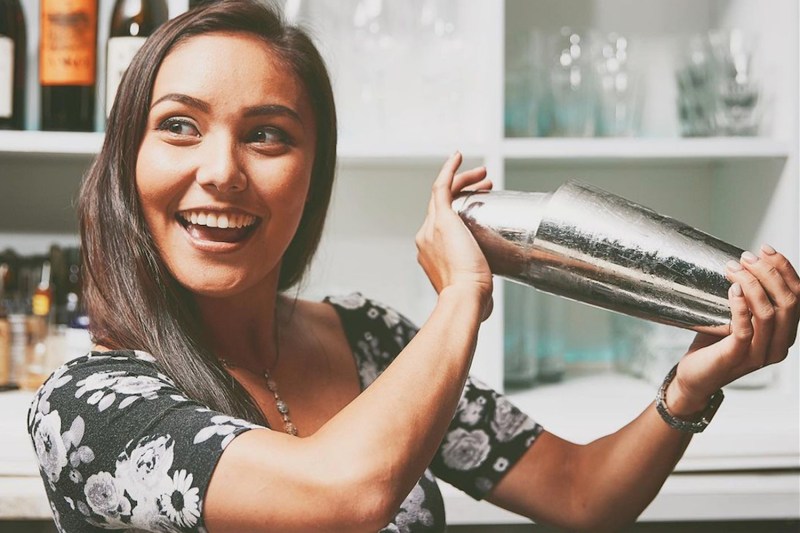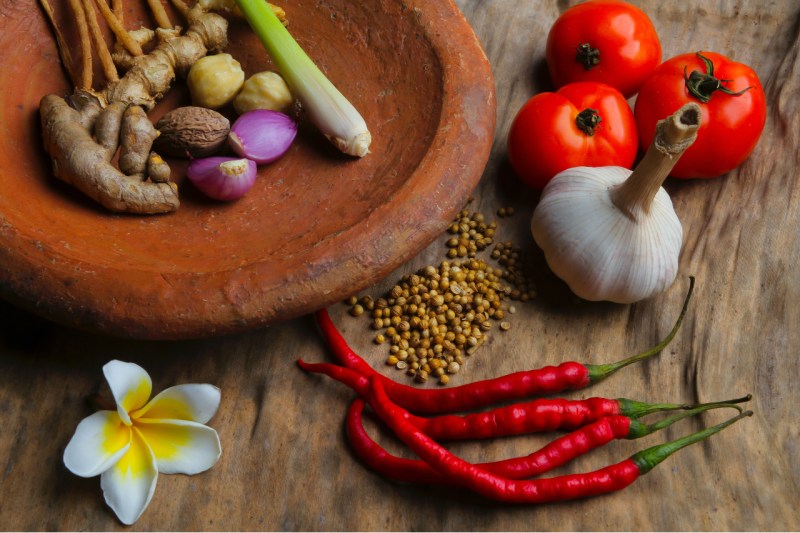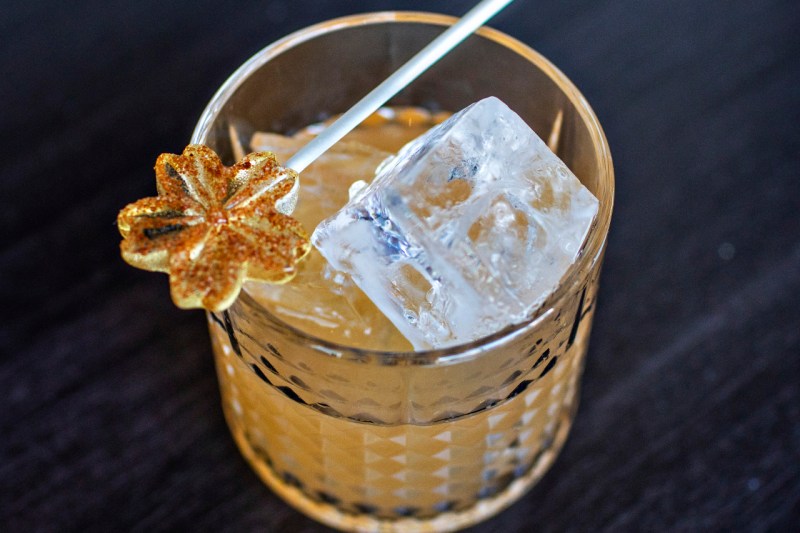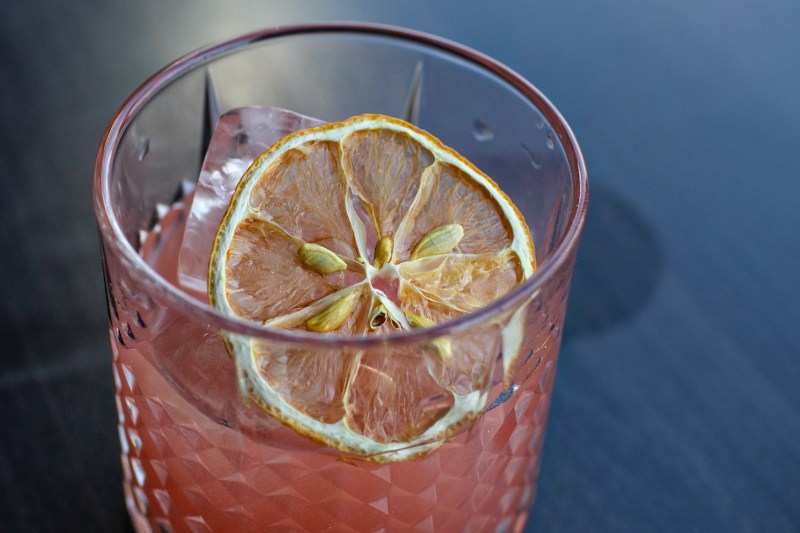With an endless array of herbs, spices, and fruits, Asian cuisine features some of the finest ingredients for cocktails. Mixed drinks are a playground for flavors, with tastes ranging from spicy to sweet and sour. From miso-infused gin to Thai chilies, the addition of these vibrant Asian ingredients is a surefire way to take your go-to cocktail recipes to deliciously creative levels.
Kira Webster, the Beverage Director of the acclaimed St. Louis restaurant iNDO, is an expert on utilizing Asian ingredients for cocktails. A restaurant that combines Japanese and Southeast Asian flavors, iNDO, is helmed by chef Nick Bognar, a James Beard semifinalist, featured on GQ and Esquire’s Best New Restaurant list, and Food and Wine Best New Chefs of 2020.

A second-generation Japanese-American, Webster has previously worked at The Preston, Chase Park Plaza, and was the Beverage Director at Bao. Recently, Webster also placed 2nd in the first-ever National Shochu Competition in Brooklyn, New York. For Webster, the use of Asian ingredients stems from childhood, although this embrace of her cultural heritage didn’t happen immediately. Growing up in a small Midwestern town, she didn’t embrace her mother’s Japanese culture initially, choosing to forgo it in order to fit in. However, as she grew older, Webster had a change of heart.
“I actually tried my first Japanese cocktail in Japan at a “Nomikai” of my mom’s workplace, which is basically a post-work drinking gathering that is very common in the culture,” said Webster. “It was my first experience with Japanese cocktails and I was particularly fond of a melon-flavored chu-hai, a Japanese-style highball cocktail with shochu, fruit juice, and sparkling water. I also find inspiration from my mom’s cooking and summers spent in Japan at grandmother’s house. The sights and smells of her food directly influence my recipes. Whenever I am able to incorporate Japanese ingredients, it feels like I put a little piece of myself into each new creation.”
How to Select Asian Ingredients for Cocktails
Webster’s use of Asian ingredients is all about balance and variety. One Japanese fruit that Webster is a huge fan of is yuzu. This fragrant Japanese citrus is simultaneously tart and fruity, making it great for brightening up cocktail flavors. But not all Asian ingredients are so easily understood. Two surprising ingredients Webster recommends trying are sesame and miso, elements better known for their savory applications. However, there’s a logic to this according to Webster.
“The flavors are robust, which makes them easier to control, and they play well with other flavors. Both are used in a wide variety of dishes, ranging from savory umami bombs to light, sweet desserts. Miso can create depth in tart, bright cocktails from its natural umami flavor and can also bring out natural botanicals and spices from spirits. In the past, I’ve also washed a maraschino liqueur with sesame oil for a twist on an old-fashioned, and the sesame took the natural barrel notes from the whisky to another level.”

How to Balance Cocktail Flavors
Webster’s biggest advice about balancing Asian ingredients is to treat it like any other set of ingredients.
“To me, flavor comes in shapes. Accentuating something is to sharpen its edges, and creating harmony is to round it out,” said Webster. “Featuring a cocktail with Thai chili pepper or Korean chili flake typically calls for something more angled and sharp, so accentuating it with something sour (i.e. citrus) will carry that flavor through. On the other hand, if a tart cocktail is too sharp and needs to be rounded out, adding a fuller texture with a little sweetness can tone it down.”
A little bit goes a long way, according to Webster. A good method is to start slow and to experiment. While perfecting and balancing some of these ingredients takes practice (and mistakes), the results will be worth it. When infusing a simple syrup or spirit, Webster recommends starting with a pinch or a dash and proceed from there, tasting as you go.
Kinboshi

“Kinboshi” translates to “gold star.” It’s a notation used in sumo wrestling when a lower-ranking rikishi (wrestler) has defeated a yokozuna (highest-ranking sumo wrestler).
Prep Time: 1 hour (for Spiced Honey and Tom Yum Lollipop)
Total Time: 1 hour and 2 minutes (for cocktail)
Yield: 1 cocktail
Ingredients:
For Cocktail:
- 1.5 ounces Milagro Reposado Tequila
- .5 ounce lychee liqueur
- .75 ounces lime juice
- .5 ounce spicy honey (See recipe below)
- 3 dashes peach bitters
- Tom Yum Lollipop garnish (optional — see recipe below)
For Spiced Honey:
Yield: Approximately 16 ounces (2 cups)
- 10 ounces honey
- 10 ounces hot water
- 2.5 ounces sugar
- 6.25 ounces fish sauce
- 6.25 ounces Thai chilis, chopped
- 1.25 grams MSG or salt to taste
- Lime juice or citric acid to taste
For Tom Yum Lollipop:
Yield: 36 lollipops
- 14 ounces (2 cups) granulated sugar
- 9 ounces (2/3 cup) light corn syrup
- 10 ounces (1.25 cups) water
- Tom yum powder for sprinkling
Method:
For Spiced Honey:
- Combine all ingredients into a blender for approximately 2 minutes.
- Strain through a fine-mesh strainer.
For Tom Yum Lollipop:
- Fill lollipop molds with tom yum powder and lollipop sticks (this can be done while waiting for the sugar to heat up).
- Combine sugar, corn syrup, and water in a saucepan over medium heat. Attach a candy thermometer. Increase heat to bring to a boil, stir until sugar dissolves. Boil until temp reaches 310 degrees Fahrenheit (hard crack stage).
- Pour syrup into the molds and sprinkle tom yum powder on top. Be extremely careful because the sugar will be HOT. Note: Don’t worry about pouring perfectly, just make sure all the molds get filled to the top. The shapes of the lollipops can be adjusted after the sugar has cooled.
- Let cool until completely hardened then carefully pull lollipops from the molds.
- Use a sharp knife to shape the lollipops after they’ve hardened. Make sure there aren’t any sharp edges.
For Cocktail:
- Make Spicy Honey.
- Shake ingredients with ice and strain over ice in a rocks glass.
- Top with Tom Yum Lollipop garnish.
Tea Trade

This balanced cocktail is highlighted by a unique ingredient — miso and chamomile-infused gin. The combination of these savory and herbaceous ingredients gives the drink a complex flavor that’s one of a kind. The secret? The infused gin should be made ahead of time, allowing the ingredients to properly blend with the liquor for maximum flavor.
Prep Time: 4 hours (for miso-chamomile fin)
Total Time: 4 hours and 2 minutes (for cocktail)
Yield: 1 cocktail
Ingredients:
For Cocktail:
- .75 ounce Miso-Chamomile Gin (see recipe below)
- .75 ounce Contratto Bitter Liqueur or Campari
- 1.25 ounces Dolin Blanc
- .25 ounce Emilio Lustau “Palo Cortado” sherry
- 2 dashes Peychaud’s Bitters
- Dehydrated lemon peel or fresh lemon slice (optional)
For Miso-Chamomile Gin:
Yield: 35 ounces (a little more than 4 cups)
- 35 ounces Hendricks gin
- 8 chamomile tea bags
- 7.5 teaspoons white miso
Method:
For Miso-Chamomile Gin:
- Stir miso and gin together, add tea bags, and let sit for at least 4 hours.
- Strain through a fine-mesh strainer.
For Cocktail:
- Stir all ingredients in a mixing glass and strain over ice in a rocks glass.
- Garnish with dehydrated lemon wheel or fresh lemon wedge.
Editors' Recommendations
- The best mango cocktails to bring the tropics to your glass
- The 17 gin cocktail recipes you can’t live without
- The amazing 3-ingredient cocktails every home bartender should know
- Warm up with these 10 stellar Tiki cocktails
- This is how to mix cocktails with honey for a flavorful drink




